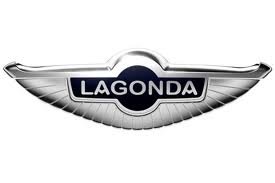A brief history of
Lagonda
Introduction
The car manufacturer Lagonda has made an important impact on the automotive world. In this article we will give a brief but detailed history of the Lagonda marque.
We will look at the origins of Lagonda looking at who, why, where and when Lagonda was founded. We'll look at the design of the iconic Lagonda logo and what are some the more significant Lagonda models.
We'll take a glance at what racing history the Lagonda has and who some of the most important people have been in the history of Lagonda over the years.
Who, where, when and why was
Lagonda founded?
Lagonda, the prestigious British luxury car manufacturer, was founded in 1906 by Wilbur Gunn. Gunn was an American engineer and entrepreneur who moved to England to pursue his passion for automotive engineering. He established Lagonda in Staines, Middlesex, with the aim of producing high-quality vehicles that combined performance, elegance, and innovation. The company quickly gained a reputation for its advanced engineering and luxurious craftsmanship.
Lagonda's early years were marked by a focus on high-performance touring cars. The company produced its first car, the 20-horsepower model, in 1907. This was followed by a series of successful models, including the 30/40, 11.1-liter, and 16/65. These cars showcased Lagonda's commitment to engineering excellence and attention to detail.
In the 1920s, Lagonda expanded its range to include sports cars and racing vehicles. The company's participation in motorsports helped elevate its profile and solidify its reputation for performance. Lagonda achieved notable success in endurance racing, including a win at the Le Mans 24 Hours race in 1935 with the Lagonda M45R Rapide. The M45R Rapide was a high-performance sports car that featured advanced engineering and aerodynamics for its time.
During World War II, Lagonda shifted its focus to producing military equipment, including aircraft components and marine engines. After the war, the company resumed car production with the introduction of the Lagonda 2.6-liter and 3.0-liter models. These luxury saloons continued the tradition of blending elegance, comfort, and performance.
In 1947, Lagonda faced financial challenges and was acquired by David Brown, the owner of Aston Martin. Under Brown's ownership, Lagonda continued to produce luxury vehicles, including the iconic Lagonda Rapide, which featured a powerful V8 engine and a luxurious interior. The brand's association with Aston Martin allowed for technological and design collaboration, further enhancing the prestige and appeal of Lagonda cars.
Throughout its history, Lagonda has maintained a reputation for exclusivity and craftsmanship. The brand's vehicles have been favored by discerning customers who appreciate the combination of performance, luxury, and British heritage. Today, Lagonda continues to create limited-production, handcrafted luxury cars that embody the spirit of automotive excellence.
How did the
Lagonda logo originate?

How did the Lagonda logo originate?
The logo of Lagonda, the prestigious British luxury car manufacturer, has undergone several transformations throughout its history. The earliest logo, used in the early 1900s, featured the word "Lagonda" in a stylized font with an elegant and flowing script. This logo represented the brand's commitment to sophistication and craftsmanship.
In the 1920s, Lagonda introduced a new logo that became synonymous with the brand. The logo featured a pair of wings positioned above the Lagonda name. The wings symbolized speed, freedom, and the spirit of aviation, which was a significant influence on Lagonda's design and engineering philosophy. The logo's sleek and aerodynamic design reflected the brand's focus on performance and innovation.
Over the years, the Lagonda logo has evolved to adapt to changing design trends and brand identity. In the 1950s, the wings were retained, but the Lagonda name was replaced by a simplified emblem consisting of a circular badge with the letter "L" at the center. This logo exuded elegance and simplicity, reflecting the refined nature of Lagonda vehicles.
In the 21st century, Lagonda underwent a significant transformation as it embraced electric vehicle technology. The brand introduced a new logo that combined modernity and heritage. The logo featured the Lagonda name in bold, capitalized letters with a sleek and futuristic design. This logo symbolized Lagonda's forward-thinking approach and its commitment to sustainable mobility.
The evolution of the Lagonda logo reflects the brand's ability to adapt and stay relevant in the ever-changing automotive industry. It represents Lagonda's rich heritage, its focus on performance and innovation, and its commitment to delivering luxurious and technologically advanced vehicles to its discerning customers.
What are some of the significant
Lagonda models?
Lagonda has a rich history of producing exceptional vehicles, including several notable models with a focus on high performance. Throughout its history, Lagonda has demonstrated a commitment to blending luxury, style, and performance, resulting in cars that captivate enthusiasts and collectors alike.
One of Lagonda's most significant models is the Lagonda Rapide, introduced in the 1960s. The Rapide was a four-door grand touring sedan that showcased Lagonda's engineering prowess and luxurious design. It featured a powerful 4.0-liter inline-six engine that delivered impressive performance, making it one of the fastest four-door cars of its time. The Rapide's sleek and elegant bodywork, coupled with its opulent interior, made it a favorite among discerning customers who sought both speed and refinement.
In the 1980s, Lagonda introduced the iconic Lagonda V8, a car that pushed the boundaries of automotive design and performance. The V8 was a luxury sedan that boasted a powerful 5.3-liter V8 engine, capable of propelling the car to exhilarating speeds. It featured distinctive wedge-shaped styling, with sharp lines and a futuristic interior that showcased Lagonda's commitment to avant-garde design. The Lagonda V8 became synonymous with exclusivity and opulence, as it was produced in limited numbers and catered to a select clientele seeking the ultimate in luxury and performance.
Fast forward to the 21st century, and Lagonda continues to impress with its high-performance models. The Lagonda Taraf, introduced in 2015, is a limited-edition sedan that epitomizes the brand's commitment to luxury and performance. Powered by a potent V12 engine, the Taraf delivers exceptional power and a refined driving experience. Its elegant and timeless design combines modern elements with classic cues, creating a visually striking presence on the road. With its bespoke craftsmanship and exclusive production, the Lagonda Taraf showcases Lagonda's dedication to creating truly exceptional vehicles.
Another noteworthy model from Lagonda is the Lagonda Vision Concept, unveiled in 2018. This concept car exemplifies Lagonda's vision for the future of luxury electric vehicles. The Vision Concept features a sleek and aerodynamic design, with a spacious and luxurious interior that redefines the concept of modern luxury. It incorporates advanced technologies and sustainable materials, aligning with Lagonda's commitment to environmental responsibility. With its electric powertrain and forward-thinking design, the Lagonda Vision Concept represents a bold step towards a new era of high-performance and sustainable luxury vehicles.
Lagonda's history is punctuated by these remarkable models that showcase the brand's ability to push the boundaries of performance and luxury. From the iconic Rapide and V8 to the modern Taraf and Vision Concept, Lagonda continues to captivate automotive enthusiasts with its commitment to excellence and innovation. Each model represents a milestone in Lagonda's legacy, embodying the brand's enduring spirit of performance, elegance, and forward-thinking design.

One of Lagonda's Most Iconic Models
Who are some of the most important people in
Lagonda's History
Behind the success and innovation of Lagonda, there are several individuals who have played pivotal roles in shaping the brand and its most significant achievements.
One such individual is Wilbur Gunn, the founder of Lagonda. Gunn was a visionary engineer and entrepreneur who established Lagonda in 1906. His passion for engineering and automobiles led him to create a brand that would become synonymous with luxury and performance. Gunn's commitment to quality and innovation laid the foundation for Lagonda's future success.
Another notable figure in Lagonda's history is W.O. Bentley, who joined the company in 1931. Bentley, renowned for his engineering prowess, brought his expertise and experience to Lagonda. During his tenure, Bentley was responsible for the development of the Lagonda 2.6-Litre and 4.5-Litre models, which showcased his engineering excellence and contributed to the brand's reputation for high-performance vehicles.
David Brown is another significant figure in Lagonda's history. Brown acquired Lagonda in 1947 and played a vital role in revitalizing the brand. Under his leadership, Lagonda produced iconic models such as the DB2 and DB4, which blended elegance with high-performance capabilities. Brown's business acumen and passion for driving excellence propelled Lagonda to new heights.
In more recent years, Dr. Ulrich Bez made a significant impact on Lagonda as its CEO. Bez, a renowned automotive executive, took the reins of the company in 2000 and spearheaded its transformation. During his tenure, Bez oversaw the development of groundbreaking models like the Lagonda Taraf and Vision Concept, emphasizing Lagonda's commitment to innovation and sustainability. His visionary leadership guided the brand into the future.
Furthermore, Lagonda has benefited from the contributions of numerous talented designers, engineers, and craftsmen who have dedicated their expertise to creating exceptional vehicles. These individuals have brought their creativity, technical skills, and attention to detail to every aspect of Lagonda's vehicles, from their stunning exteriors to their luxurious interiors.
Together, these individuals have shaped Lagonda into the esteemed brand it is today. Their vision, passion, and commitment to excellence have propelled Lagonda to the forefront of automotive innovation and luxury. Whether through engineering, leadership, or design, these significant people have left an indelible mark on the history and legacy of Lagonda.

One of the most influential people in the history of Lagonda
Lagonda's Racing History
Racing has been an integral part of Lagonda's history, with the brand making notable achievements and contributions to motorsport. Throughout the years, Lagonda has participated in various racing events, showcasing its engineering prowess, performance capabilities, and competitive spirit.
One of Lagonda's most notable racing ventures was its participation in the 24 Hours of Le Mans. Lagonda first competed in this prestigious endurance race in the 1930s, achieving remarkable success. In 1935, Lagonda secured a historic victory in the 24 Hours of Le Mans with its Lagonda M45R Rapide, driven by John Hindmarsh and Louis Fontes. This triumph marked the first and only win for Lagonda at the renowned endurance race, solidifying the brand's racing legacy.
In addition to its Le Mans victory, Lagonda also participated in other prominent racing events, including the Monte Carlo Rally. Lagonda cars demonstrated their performance capabilities and reliability in this demanding rally, earning recognition for their impressive performance on challenging terrains.
Another significant chapter in Lagonda's racing history came in the 1950s when the brand introduced the Lagonda V12 racing prototype. This innovative prototype featured advanced engineering and aerodynamic design, showcasing Lagonda's commitment to pushing boundaries in motorsport. Although the V12 racing prototype didn't achieve notable competitive success, it served as a platform for technological advancements that would influence future Lagonda models.
Throughout its racing endeavors, Lagonda has consistently embraced innovation and pushed the boundaries of automotive performance. The brand's racing heritage not only served as a platform to showcase its engineering capabilities but also contributed to the development of road-going Lagonda models. The lessons learned from the racing track were incorporated into the design and performance of production vehicles, further enhancing the brand's reputation for performance and driving pleasure.
Today, Lagonda continues to celebrate its racing heritage through various initiatives, including participation in classic car events, where vintage Lagonda racing cars can be seen in action. These events not only pay homage to Lagonda's racing legacy but also provide enthusiasts and spectators with the opportunity to witness the brand's rich racing history firsthand.
Summary
Lagonda is a distinguished car manufacturer renowned for its luxurious and innovative vehicles. With a rich history spanning over a century, Lagonda has established itself as a symbol of elegance, craftsmanship, and automotive excellence. The brand's vehicles are synonymous with opulence, blending stunning design, refined interiors, and advanced engineering.
Lagonda has introduced numerous iconic models throughout its history, each representing the brand's commitment to delivering exceptional performance and luxury. From the classic Lagonda Rapide to the modern Lagonda Taraf, these vehicles showcase the brand's dedication to blending power and sophistication seamlessly. Lagonda's cars are not only visually striking but also incorporate state-of-the-art technology and cutting-edge features, ensuring an unparalleled driving experience.
View Lagonda Car Specifications
More Manufacturer Histories.

























